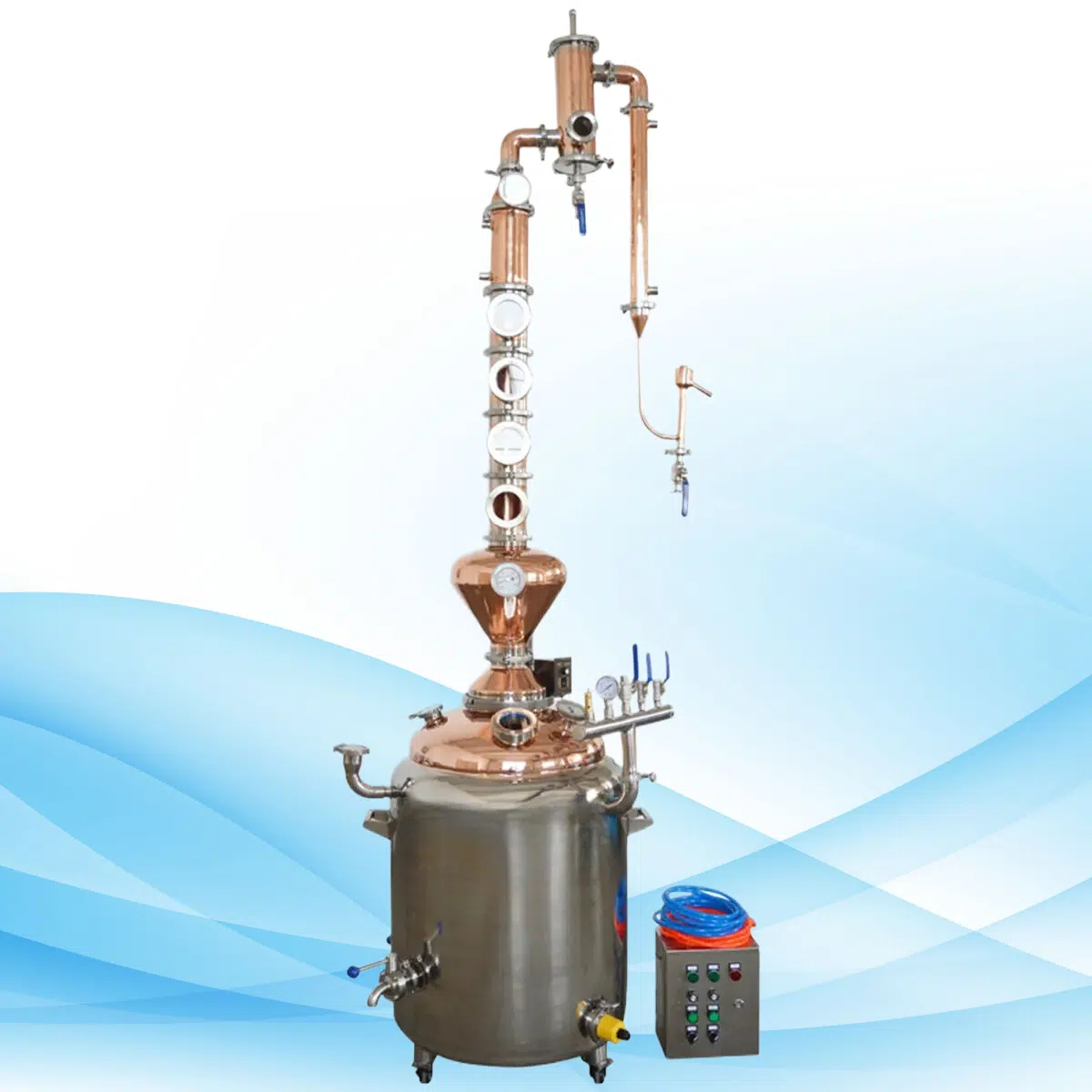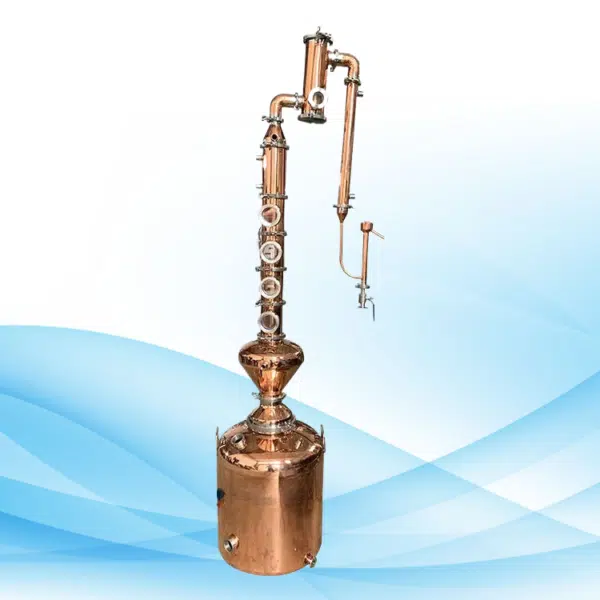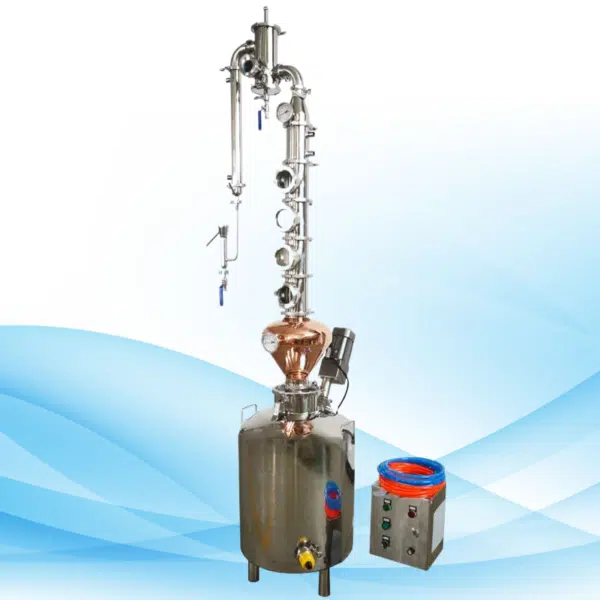What is a Gin Column Still?
Gin column stills have been made specifically for the purpose of creating gin, this is because it uses botanicals that contain flavorful vapors that allow users to create refined spirits. Gin column stills have revolutionized the gin distilling for the user, making it easier and more skilled. Compared to traditional pot stills, gin flask stills come in a range of sizes, and materials which range from plates to distilled gaps. The kind of materials used allow stills to create a large variety of compounds, which can then be used to flavor different dishes in a range of versatility.
A Quick Overview of the 26Ga/100L and 13GA/50L Gin Column Stills
The 26-ga 100L And 13GA 50L gin column stills are both sophisticated setups meant for distillation on either a home or a small commercial level. The 100-liter one is suitable for large volumes, while 50-liter can be used to produce small amounts in succession. Both of these stills look good as they are constructed of quality materials like copper alloys and stainless steel, which helps to ensure they function properly and are not hard to maintain.
Important Features of the Gin Column Still
Now consider some of the distinctive qualities that make it possible to readily use gin column stills 26Ga and 13GA/50 L:
The 4-Inch, 4-Plate Copper Flute Column
This gin column still is designed around a 4 inch 4 plate copper flute columns, with the intention of having four plates acting as distillers, contributing to effective purification and the necessary taste of the gin by capturing flavor from the botanicals used.
4 Inch Diameter
Supplies plentiful area to facilitate vapor activity on the surface.
4 Plates
Improves the reflux while allowing several rounds of distillation to occur in a single cycle, which is necessary in making a fine quality gin.
Copper Reflux Sections
Due to its capacity to eliminate sulfides from alcohol vapors, Copper is one of the most used metals for distilling. The copper reflux sections present in the gin column serve to enhance the gin by removing imperfections and yielding a clear taste.
Stainless Steel Dephlegmator
The dephlegmator plays an essential function when regulating temperature, assisting in only vaporising some elements of alcohol fumes to help blend the taste. This product that has been designed with stainless steel will serve its purpose of withstanding conditions and performing well in vapor condensation.
Condenser and Parrot
Condenser: Assures effective cooling of the vapour so that it can revert to a liquid state.
Parrot: Distillers are able to see exactly what alcohol proof is at during the process, allowing better supervision of the alcohol being made.
Electric Controller: Variable AMPS for Accuracy
The electric controller with adjustable AMPS gives the distillers an option of controlling the heat levels. This is very important as botanicals are heated at assorted temperatures to get the desired change. The controller helps in adjusting your heating methods, which will bring an important improvement in the distilling methods used.
Advantages of Utilizing a Gin Column Still for Distillation
There are numerous advantages to using a gin column still, when compared to traditional distillation apparatus, such as:
- Control of Flavour: The passing of vapors through the botanicals is a classic way to produce specific flavours.
- Improved Quality: Several plates guarantee extraction of every impurity, rendering the gin flawless.
- Time Saving: Due to high reflux, fewer number of distillations take place, as each run is faster.
Basic Instructions to Follow When Setting Up Your Gin Column Still
- Get the Still Ready: Fix the plates into the column, together with a dephlegmator and a condensing unit.
- Link the Electrics: Connect the wires, ensuring the system is protected and functional.
- Include Flavors: Automated filling problems can be solved by placing the variables inside the gin basket or right in the column, based on what you prefer.
- Commence Distillation: Observe the temperature and tweak the electric controller to reach the optimal temperature.
- Snatch the Distillate: Use the parrot to monitor the proof and collect the suitable distillate.
Possible Risks Linked with the Use of Gin Column Stills
- Check on Electrical Interfaces: The controller should be checked if it is connected securely.
- Thermostats: Prevent overheating issues, accidents and obtain good quality distillate.
- Ventilate: Ensure that you do not use your still in enclosed spaces to minimize fume inhalation.
Tips for Distilling Gin at Home or Commercially
- Experiment with Botanicals: Experiment with botanical elements to create unique flavors.
- Control Reflux: Reflux control is achieved by adjusting the dephlegmator which determines versus maters intensity of taste.
- Slow and Steady: Patience goes a long way; when you slowly distill parts, then the taste is better.
Maintenance and Cleaning Steps That Ensures Durability
- Rinse After Use: Every time you use the condenser, you should wash the dephlegmator and plates as well.
- Polish Copper Parts: The poles are likely to tarnish, so it is a good idea to polish into the bronze pipe from time to time.
- Inspect Electric Controller: The wires that are within the various controllers become loose due to strain and require regular checks to ensure that it is not the case.
Questions and Answers about Gin Column Stills
Q1: What is the field of a 4-plate gin column still?
A: A Four plate column offers a greater reflux ratio, which means multiple distillation occur in a single pass. The result is high quality gin which is very smooth and ideal.
Q2: Why do gin column stills use copper material?
A: Sulphur compounds are removed through copper so that gin appears to be clean.
Q3: What is the role of the dephlegmator in a gin column still?
A: The dephlegmator adjusts condensation of vapor, allowing only selected vapor to rise up the column – thus allowing the distiller to massively dictate what the taste and purity features.
Q4: Can additional spirits be distilled using the gin column still apart from gin?
A: Particularly interesting is that vodka and whisky can also be produced using a gin column still, as it has a quite versatile use.
Q5: Are the benefits for the gantry system the only advantages an AMPs variable control does provide?
A: It lets you control the temperature with accuracy, which makes it possible to enhance the extraction of the botanicals and guarantee that the end flavor is well-balanced.
Q6: What is the main distinguishing factor between the 26Ga/100L device and the 13GA/50L variant?
A: The 26Ga/100L is ideal for large volumes of production, while the 13GA/50L is for smaller but more regular production runs, with all of them maintaining the excellent quality of the parts used in them.
This gin column still provides the distiller with sovereignty, quality, and tools required to enhance engineering precision in gin distillation applications. The 26Ga/100L 13GA/50L gin column still ensures all batches guarantee a professional finish whether you are distilling for yourself or commercially.




